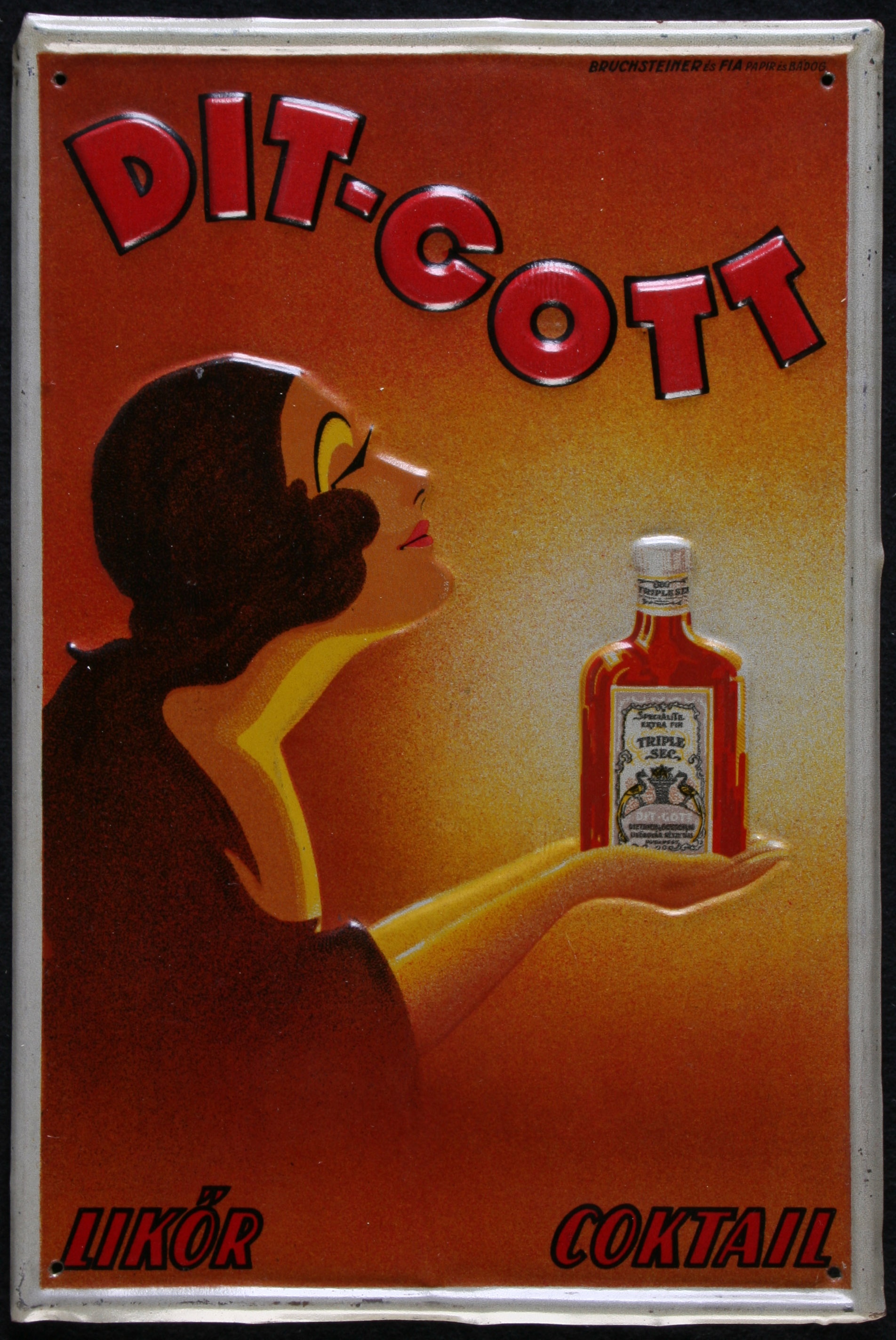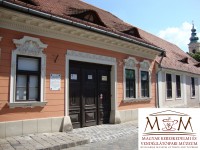Kisméretű téglalap alakú színes barna alapszínű bádog reklámtábla. Felül vörös színnel DITT GOTT (Deittrich és Gottschlig) felirat alul LIKŐR / COCKTAIL felirat látható. Középütt modern rajzos nőalak, látható kezében DITT GOTT Triple Sec üveggel. Körben fehér színű keret látható. Felül a gyártó neve: Bruchsteiner és Fia, papír és bádog felirat olvasható. 1920-as évek.
en

















